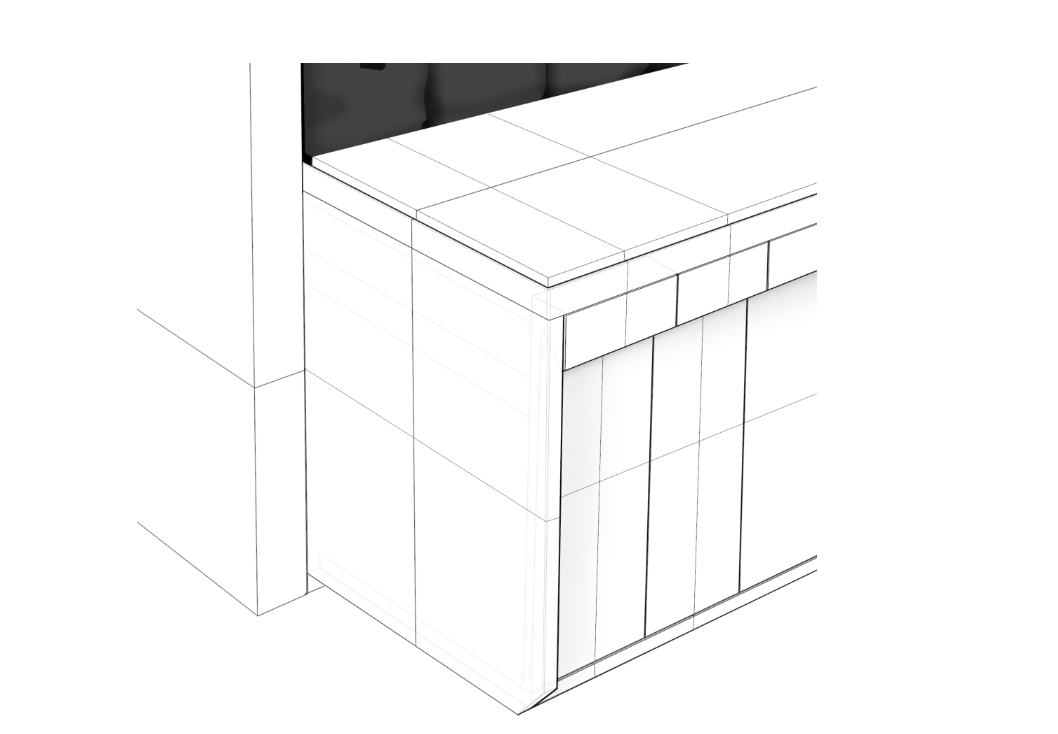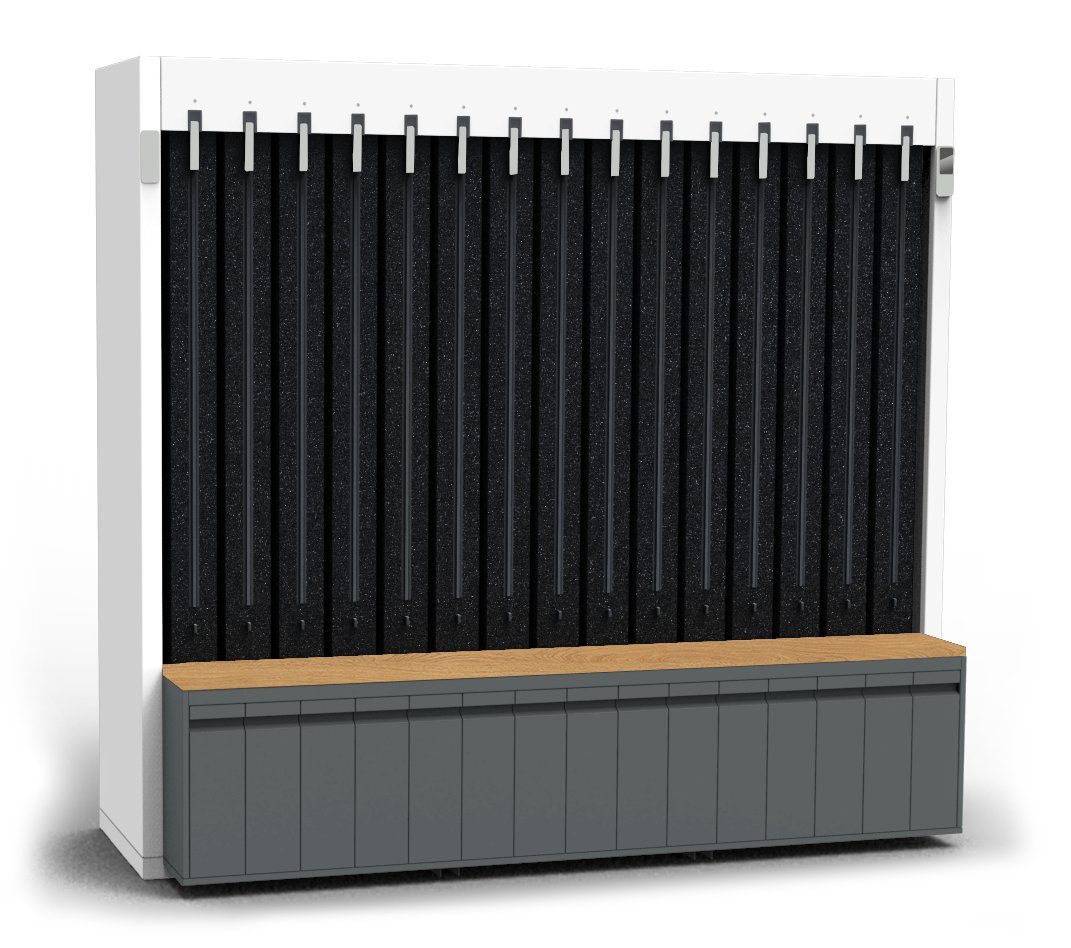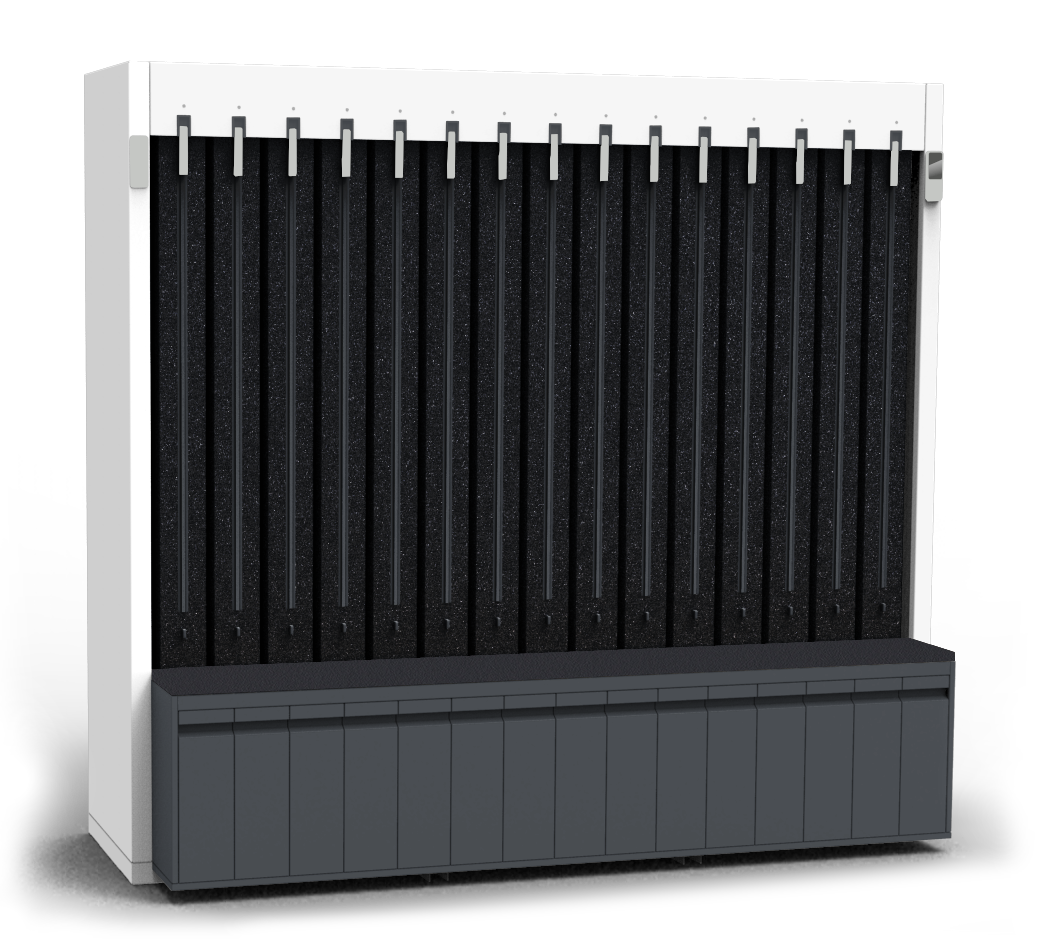Howideasbecomereality
If you compare our first product version to the current version, it is hardly recognizable. We owe this to the great work of our engineering team in Budapest. They are constantly working on improving our smart locker solution called ZippSpace. We recently released a new generation of the ZippSpace, which again means a huge step forward. For this occasion, we want to show you, how we approach product developments and give you insights into our processes. Balazs Vaci, one of our long-time Mechanical Engineers, tells us how at Zippsafe we turn ideas into reality and what happens if a concept doesn’t work out as planned.
What is the most fun about your work in engineering?
The best part about my work is when your idea becomes a physical product. It is really rewarding to make prototypes out of your sketches, and you are able to materialize them while using your own hands.
How do you get ideas for product improvements or product developments?
The whole company is involved in the ideation phase. Everyone can add their thoughts to the pool of ideas, which are collected on a Trello board. There are many suggestions from the team.
Your teammates have a lot of ideas. How do you prioritize which one to pursue?
We have an internal product management board, which is responsible for making hypothesis and validate the ideas in an early stage. They test the problem-solution-fit with methods such as in-depth conversations or surveys. For the selection of ideas, a scoring system is used. The rating is based on different criteria such as financial achievements, the user experience or quality of the system. To give you one example: We evaluate if the suggested product development can minimize the assembly installation time. When the manufacturing process becomes faster, it will positively affect efficiency and subsequently our financial performance. At the same time, the aspect of user experience is taken into account. If the idea doesn't improve the user-friendliness, it won’t be considered. Lastly, the goal is to make our product more robust and secure long-term.
How are customer needs integrated?
To get differentiated opinions, we organize tests with different focus group. This can either be external groups or internal tests with our team.
Since you are mentioning the team - How does the collaboration between the departments at Zippsafe look like?
This depends on the phase and the topic. Anyone who can contribute valuable input will be contacted. As mentioned above, the ideation phase is led by the product management team. They are the ones challenging the product from a user experience perspective and reach out to our advisory boards when needed. If we require specific information of our buying centre, I get feedback from the sales team. The operations department is involved when it comes to topics such as installation or after sales processes.
How do you approach the improvements? How does the process come along from the idea to implementation?
We use a method called Plan Do Check Act. The entire project is documented in a project charter. The product management board evaluates our financial goals, lays out high-level objectives and requirements. If the planning is done, we start to concept the design and create visualizations. This leads to the creation of the prototypes. The prototype is usually iterated three times.

Sketch of the new shoe compartment
Each time, we draw a comparison to the base requirements that were defined in the beginning by the product management board. The prototypes are either provided by a manufacturer or we use the technology of 3D printing. When adjustments are needed or new ideas pop up, we integrate them into the process. If the prototype is put under test we request feedback from our board, users, a specific department or reach out to a focus group. Subsequently, we try to implement the feedback. With every iteration, the prototype gets more and more advanced.
After the final round, the prototype is production ready. By that point the final material, shape, size etc. that will be produced are fixed. The last step is to create the final documentation and send everything into production.
What are the biggest challenges?
The biggest challenge is to deal with additional ideas, that pop up during the production process. If they are worth implementing but not planned beforehand, it changes the timeline and can exceed the planned budget.
Did ever something not work out as planned?
Yes, for sure! We have way more ideas than human or financial resources. Luckily, otherwise we would get bored one day. Sometimes it happens that a planned idea does not work out. It is than important not be protective of your own ideas, have the bigger picture in mind and consider the impact on the product.



